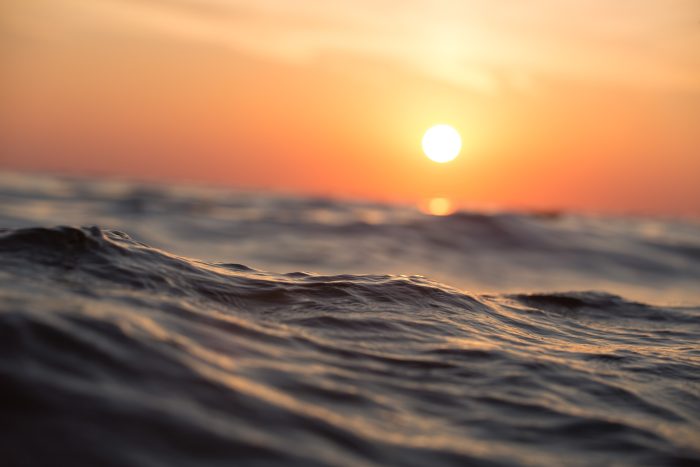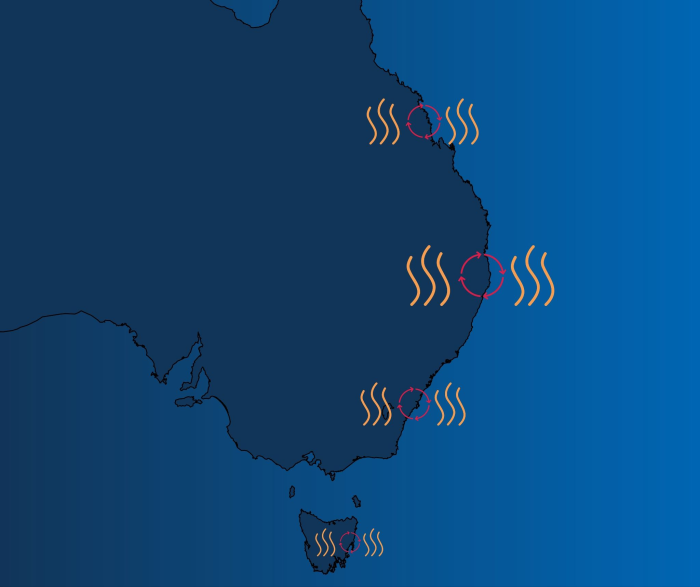Charuni Pathmeswaran, UNSW with Jonathan Brown

When you start a PhD, the hardest thing is to come up with the question you’re going to spend four years trying to answer.
As a starting point, I wanted to investigate what causes heatwaves on land, but as I dug deeper, I found that a lot of work had already been done on this very general question.
The same was true for heatwaves in the ocean, even if it is a much newer field.
The ‘aha’ moment was when we realised there was a knowledge gap in understanding the connection between heatwaves on land and heatwaves in the ocean, and indeed if one can affect or trigger the other.
We call these “co-occurring heatwaves”. Finally, I had a place to start.
We wanted to answer this question as there is a growing interest in these double whammy land and ocean heatwaves.
If these heatwaves co-occur more often, a wide range of industries may get impacted at the same time, potentially harming the local economy and ecosystem.
How heatwaves on land and in the oceans around Australia interact
Now I had a question; the next thing I needed was data. As I was looking at short, infrequent phenomena, I needed daily records of ocean and land temperature, as well as data on the factors that might affect heatwaves like winds, clouds and ocean currents.
Because observations are often few and far between, I turned to a clever data source called climate reanalysis.
Imagine you’re looking at a puzzle with missing pieces.

You can see some of the pieces and use them to guess what the missing pieces might look like.
Climate reanalysis works in a similar way, using the data that we have from weather stations and other sources to fill in the gaps and create a more complete picture of past climate conditions.
It’s like taking a “snapshot” of the past climate that can help us better understand how our climate has changed over time.
To analyse large amounts of data, people often use tools like Excel, but these tools just don’t cut it for billions of data points that climate scientists regularly have to analyse.
So instead, I built my own computer programs (written in a language called Python) that had to be run on a supercomputer – called Gadi – that trawled through the datapoints to identify land and ocean heatwaves along Australia’s coast.
Gadi means ‘to search for’ in the language of the Ngunnawal people.

Ocean heatwaves increase the likelihood of land heatwaves
To our surprise, we found that heatwaves in the ocean really boosted the number of heatwaves on nearby land.
Even if you are 150km away from the coast, the heatwaves on land were affected by heatwaves in the ocean.
To figure out why this happens, we put three locations – Townsville, Ningaloo and Hobart – under the microscope. We looked at weather conditions during times when heatwaves on land and in the ocean were co-occurring.
We found that weather systems driving a land heatwave also help to warm the ocean.
While these weather systems could explain some of the ocean warming, they couldn’t turn up the heat sufficiently to generate a marine heatwave, unless the ocean was already warm before the appearance of the weather event.
So, these co-occurring events need both a pre-warmed ocean and the right weather systems to occur.
The amount of heat in the water before the ocean heatwave is triggered is what we call the ‘ocean precondition’.
Land and ocean heatwaves are more connected than we thought
The main takeaway from this study is that land and ocean heatwaves co-occur more often than chance would dictate.
And the main reasons for this is that large scale weather systems that trigger land heatwaves near the coast can also warm the nearby ocean, making the occurrence of an ocean heatwave more likely.
This is the first study to look at how these heatwaves might be connected along the Australian coast.
Read the full research in Frontiers in Climate.
With thanks to Associate Professor Melissa Hart and Associate Professor Alex Sen Gupta for their assistance with this article.
